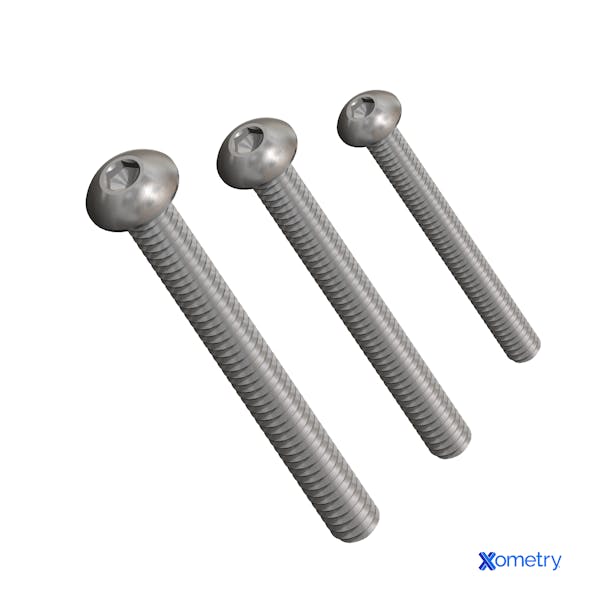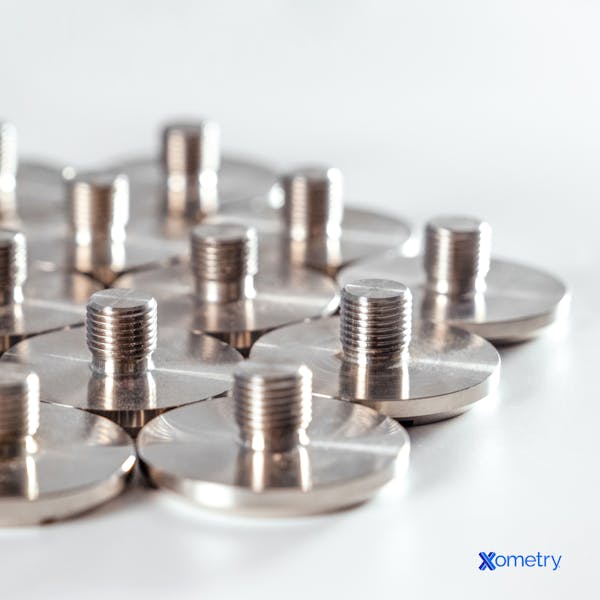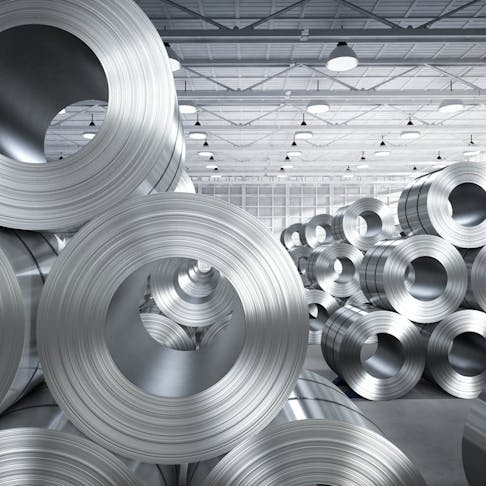Stainless steel ticks all the boxes for manufacturers looking for a durable material that can be shaped and molded into all sorts of products—and it’s is pretty to look at, too. The problem is that there are so many different types that you have to know what each one brings to the table before you can settle on which to use for 3D printing, sheet metal fabrication, or any other process. We’ll take a better look at one of the most popular stainless steels, 18/8, and share the types of applications it’s best for, as well as the ways in which Xometry can help with stainless steel processing and manufacturing for your business.
What is 18/8 Stainless Steel?
18/8 stainless steel (categorized as grade 304) contains several ingredients that funnel it into this specific category—most notably, it has around 18% chromium and 8% nickel. Although the largest alloy percentage comes from iron, these two metals give this grade its name and influence specific properties, like corrosion resistance.
Chromium is known for its oxygen barrier-forming ability, which means this type of stainless steel has a better defense against stains and corrosion. As for the nickel, this, too, wards off corrosion, but it will also give the steel extra strength and a lustrous finish to boot. Traces of other alloys can be found in 18/8, like molybdenum, silicon, nitrogen, copper, and/or titanium. To compare it to other stainless steel, 18/8 is basically the lovechild of 18/10 and 18/0.
Properties
To get a bit more technical, we’ve listed all of 18/8 stainless steel’s properties below.
| Property | Value |
|---|---|
Property Density | Value 8.0 g/cm³ |
Property Melting Point | Value 1,400–1,450 °C |
Property Thermal Conductivity | Value 16.2 W/m·K at 100 °C |
Property Electrical Resistivity | Value 720 nΩ·m at 20 °C |
Property Modulus of Elasticity | Value 193 GPa |
Property Poisson's Ratio | Value 0.29 |
Property Tensile Strength | Value 515 MPa |
Property Yield Strength | Value 205 MPa |
Property Hardness (Rockwell B) | Value 70–85 HRB |
Property Hardness (Brinell) | Value 201–262 HB |
Property Corrosion Resistance | Value Excellent |
Property Magnetic Properties | Value Non-magnetic |
Properties of 18/8 Stainless Steel
How it’s Made
The process for making 18/8 stainless steel is similar to other types and involves smelting its multitude of ingredients in an electric arc furnace. Once the chromium, nickel, iron, and other alloys are added in, the metals will liquefy and then go through refining to ensure there are no impurities or unwanted chemicals, which will be separated out as slag. Then the finalized steel will harden within molds—whether you’ve chosen ingots, billets, slabs, or another shape. It will then be processed and finished and fulfill its life’s purpose of being an aerospace or automotive part or a household product (those are just examples; the world is its oyster really).
Uses and Applications
We can’t really rave about 18/8 stainless steel enough. It’s useful in so many industries and can be made into a plethora of products, including:
- Cookware (pots, pans, cooking utensils)
- Kitchen appliances
- Architectural elements (window frames, decorative parts)
- Automotive parts (grilles, exhaust pipes, pipe systems, trim, body panels)
- Medical and dental equipment (did we mention it has hygienic properties and is easy to sterilize? It’s also biocompatible)
- Construction materials (roofing, cladding, handrails)
- Food and chemical (tanks, cans, pipes)

Advantages and Disadvantages
There are several benefits, as well as a few downsides, you should know about when working with 18/8 stainless steel specifically. Some of its best advantages include:
- Only 18/10 has better corrosion resistance
- It’s strong and durable enough for heavy loads and mechanical stresses
- It’s hygienic stainless steel that’s easy to clean and sterilize, making it ideal food, medical, or dental workplaces
- Its bright and silvery finish is much more aesthetically pleasing than other stainless steels out there
- It’s reliable for welding, machining, or forming into complex parts
- It’s recyclable so you can do your part for the environment
Here are the not-so-great aspects of 18/8 stainless steel:
- It’s a little more expensive than other stainless steels (you can thank the higher nickel content for that)
- It’s an austenitic stainless steel but could develop a slight magnetic pull after some cold working processes
- While it has excellent corrosion resistance, its kryptonite is saltwater, chlorinated, and highly corrosive environments, which can degrade it much quicker.
- This stainless steel has a high melting point, but at certain high temperatures, it will lose its integrity.

18/8 Compared to Other Steels
18/8 is normally compared to 18/10 and 18/0 stainless steels, and it’s an austenitic steel like 18/10, whereas 18/0 is a ferritic steel The main difference is that the latter is magnetic while the former is not. As far as quality and price range go, 18/8 sits in the middle of the two and offers a relatively affordable price point, good corrosion resistance, high strength, good weldability, and good for CNC machining. That being said, in comparison to the higher nickel content of 18/10, 18/8 does corrode in saltwater environments and it can only be hardened through cold working.
How Xometry Can Help
Stainless steel is not only popular within the industry but also one of our most asked-about materials. We offer many different services for processing and manufacturing stainless steel, including 3D printing, injection molding, metal stamping, laser cutting, and even custom metal extrusion options.
Copyright and Trademark Notices
- Monel® is a registered trademark of Special Metals Corporation
Disclaimer
The content appearing on this webpage is for informational purposes only. Xometry makes no representation or warranty of any kind, be it expressed or implied, as to the accuracy, completeness, or validity of the information. Any performance parameters, geometric tolerances, specific design features, quality and types of materials, or processes should not be inferred to represent what will be delivered by third-party suppliers or manufacturers through Xometry’s network. Buyers seeking quotes for parts are responsible for defining the specific requirements for those parts. Please refer to our terms and conditions for more information.


